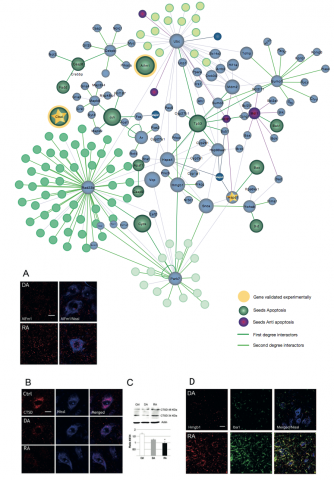Network-based proteomic approaches reveal the neurodegenerative, neuroprotective and pain-related mechanisms involved after retrograde axonal damage

Casas C, Isús L, Herrando-Grabulosa M, Mancuso FM, Borrás E, Sabidó E, Forés J, Aloy P, Neurodegenerative processes are preceded by neuronal dysfunction and synaptic disconnection. Disconnection between spinal motoneuron (MN) soma and synaptic target leads either to a retrograde degenerative process or to a regenerative reaction, depending injury proximity among other factors. Distinguished key events associated with one or other processes may give some clues towards new therapeutical approaches based on boosting endogenous neuroprotective mechanisms. Root mechanical traction leads to retrograde MN degeneration, but share common initial molecular mechanisms with a regenerative process triggered by distal axotomy and suture. By 7 days post-injury, key molecular events starts to diverge and sign apart each destiny. We used comparative unbiased proteomics to define these signatures, coupled to a novel network-based analysis to get biological meaning. The procedure implicated the previous generation of combined topological information from manual curated 19 associated biological processes to be contrasted with the proteomic list using gene enrichment analysis tools. The novel and unexpected results suggested that motoneurodegeneration is better explained mainly by the concomitant triggering of anoikis, anti-apoptotic and neuropathic-pain related programs. In contrast, the endogenous neuroprotective mechanisms engaged after distal axotomy included specifically rather anti-anoikis and selective autophagy. Validated protein-nodes and processes are highlighted across discussion.
Scientific Reports,
2015, 5: 9185, 1-13
Pubmed: 25784190
Direct link: 10.1038/srep09185
